



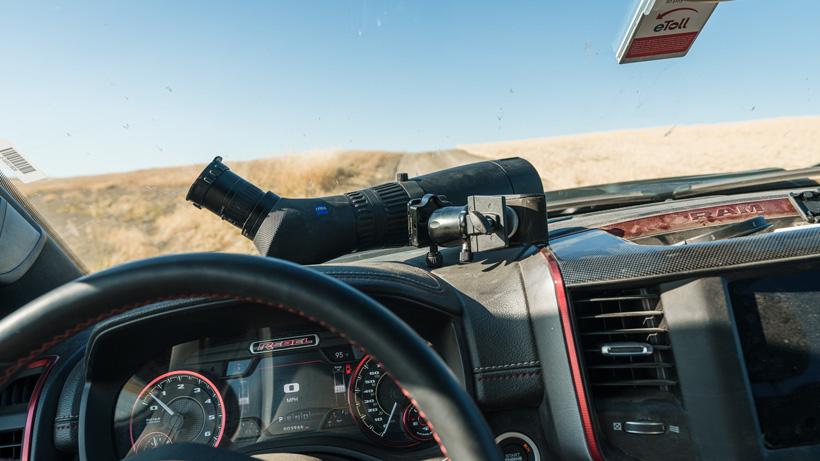
Keeping your spotter open on a dash of a truck while driving around in rough terrain is just asking for trouble.
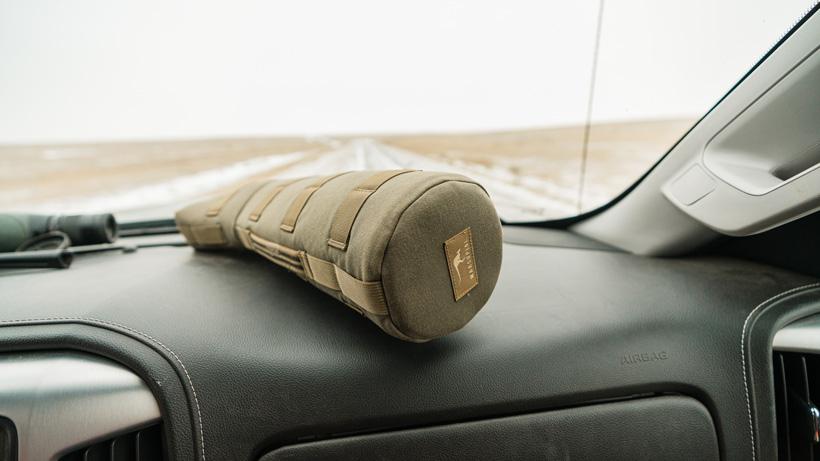
Notice in the above photo I have my spotting scope protected, but my dad has his spotter open on the left side of the image.
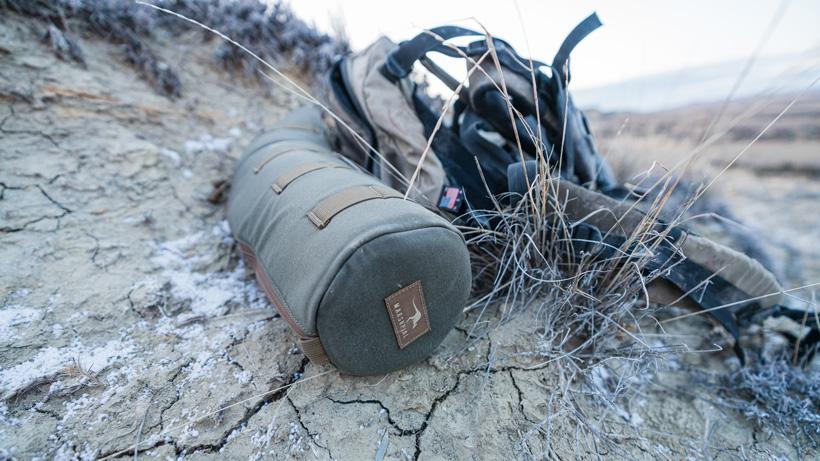
The above case is the 95mm angled version made by Marsupial Gear.
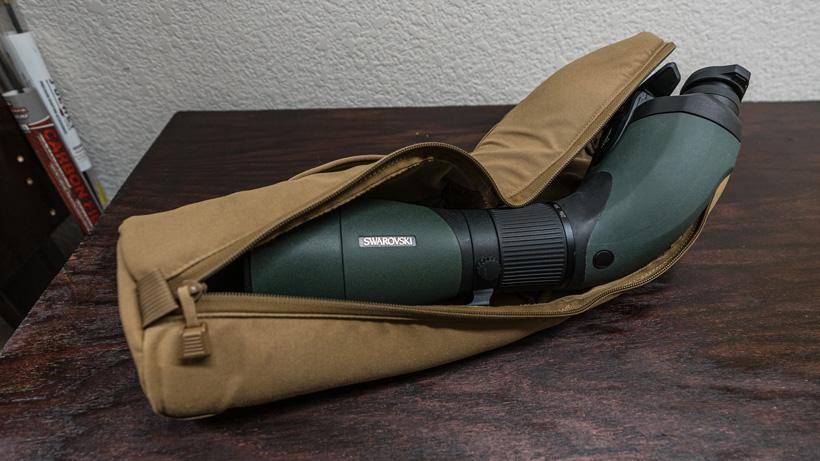
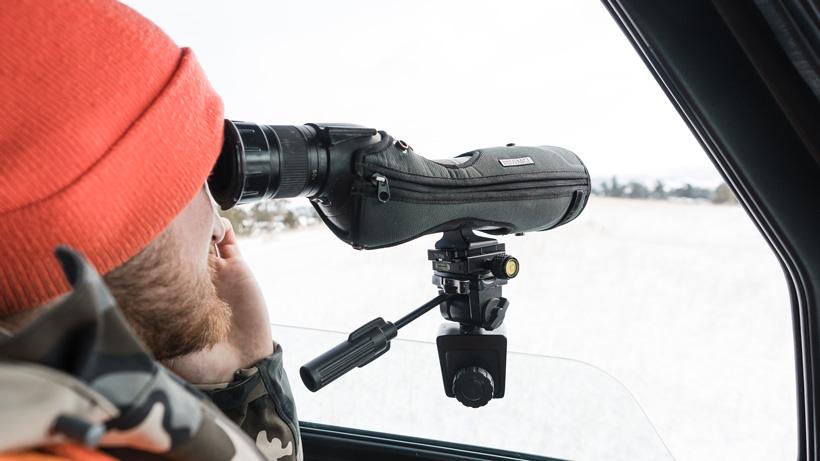
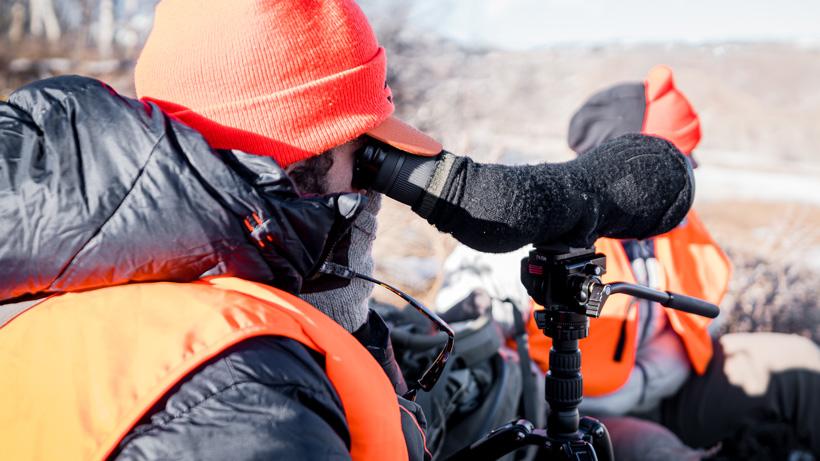
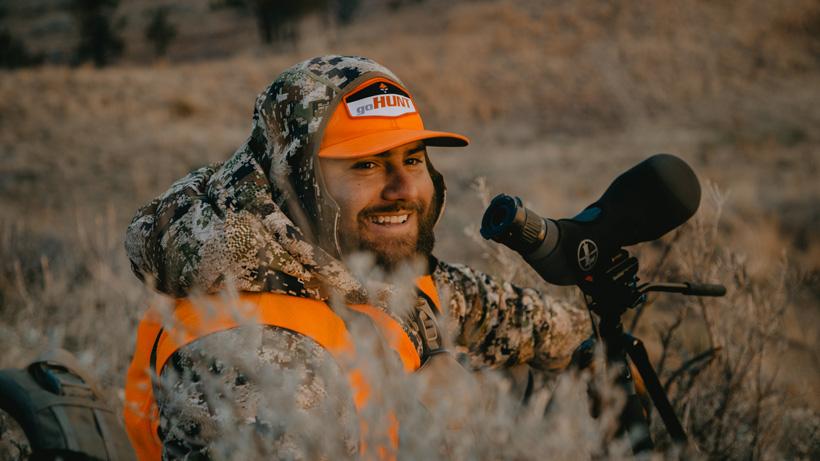
Photo credit: Luke Dusenbury
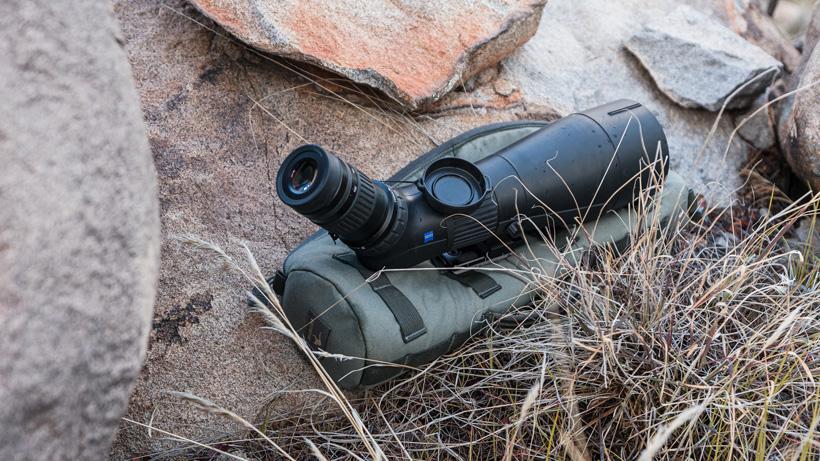

Let’s face it, buying a spotting scope is a well thought out decision. Quality glass isn’t cheap and because of that, keeping your glass in optimal condition year after year is essential. So instead of allowing a spotting scope to get beaten up on a hunt or bouncing around in your truck unprotected, it's best, in this case, to prepare for the worst and utilize a spotting scope case or cover. After all, that piece of glass can be the tipping point in helping you find more animals.
It might seem pretty obvious, but the sole purpose of a spotting scope cover is to protect your spotter from getting banged up while hunting. This level of protection goes beyond the standard eyecap and objective cap. A spotting scope cover protects against all sorts of dust, debris, impacts and even helps prevent unwanted snow and rain from getting on your glass when you’re not using them.
Keeping your spotter open on a dash of a truck while driving around in rough terrain is just asking for trouble.
Put a different way, I wouldn't place my rifle in the bed of my truck unless it was in a padded rifle case, and the same goes for a spotting scope, I wouldn't place it with the rest of my gear traveling to my hunting spot unless it was in a padded case.
My method for keeping a spotting scope safe is to use a removable case that goes over the spotting scope and can be easily pulled off when it’s time to glass. I get asked a lot why I don’t have any protection on my spotting scope when I’m actually glassing, and personally, I don’t like anything attached to my spotting scope when glassing. Anything added to a spotting scope can act as sort of a sail that catches wind causing the sight picture to move around. That movement is a big issue when glassing which is why I now avoid anything that stays on a spotting scope.
Another thing to bring up, the outside of a spotting scope is tougher than most people give them credit for and a spotting scope can definitely handle getting snowed on or rained on while using it. But when I'm not using it, this is the time I would like to ensure my optic is protected.
Notice in the above photo I have my spotting scope protected, but my dad has his spotter open on the left side of the image.
Also, another important aspect of a spotting scope case is to keep the spotter safe while you travel. When scouting/hunting and covering lots of miles in a truck, I typically have my spotting scope riding on the dash or the seat next to me if I am solo. One great feature of a Marsupial Gear spotting scope cover is the dual zipper design. This means I can keep my window mount attached to the spotting scope and still zip up the protective case while glassing from road systems.
So when in a vehicle, again I prefer to keep my scope in a covered case just for those rare moments when my spotter slides around, or worse, somehow bounces down to the floor. This way if something happens, I know my scope can handle a small fall. It should also be worth noting that when my spotting scope is in a protective case, I still have all the lens caps on.
The above case is the 95mm angled version made by Marsupial Gear.
Marsupial Gear makes spotting scope cases for straight and angled spotters. You can select between a 65/85mm version as well as a 95mm version. These are the bee's knees of spotting scope protection! They are made of quality materials and offer a phenomenal level of padded protection.
Where these also shine is with Swarovski's BTX system; one version will fit your BTX eyepiece and objective or you can pick up one just for the BTX eyepiece if you're carrying other modular eyepieces.
One unique feature of the Marsupial Gear cases is they have MOLLE webbing on the sides of the case that allows you to attach your spotting scope cover to the outside of your pack if you need to free up space in your backpack. Worth mentioning, all of the Marsupial Gear spotting scope covers have handles at the top that allow you to safely carry your spotting scope.
Along those same lines, you can also get a padded shoulder strap from Marsupial Gear for an additional way to carry your spotting scope. The shoulder strap easily attaches to the MOLLE webbing.
Swarovski makes stay on cases for their spotting scopes. You can get one for the eyepiece module (angled or straight) and the objective module. I owned a straight Swarovski spotting scope for several years and purchased a stay on case for it. The spotting scope I used is actually in the above photo with the stay on case. What I really liked about this design is being able to remove the front objective cover and remove the eyepiece cover to prevent those pieces from catching wind, while at the same time still having something on the body of the scope in case I needed to set the spotter on the ground and quickly go from spotter to binocular. If it wasn't windy, I could just swivel the covers to the side and glass away.
If you want to save cash and some weight, you can always modify a wool sock to fit over your spotting scope. You will cut out a small slot in the middle of the sock for the tripod plate and then cut a slot in the toe end so you can pull that open to glass. While this method is light, sometimes it can be a little finicky when trying to fine focus because you have to grab the sock. Maybe another trick could be to cut out an area for the fine focus. I think this method does protect your scope really well and the nice part of this design is you don't have anything that can catch in the wind.
Photo credit: Luke Dusenbury
Another option for spotting scope protection is a neoprene cover that is specifically made for a spotter. These are great additions if you really want something to protect your scope at all times. They are lightweight and typically offer a very custom fit. The one downside is that most models do not allow for an easy way to totally remove the neoprene eyecap and objective cap. In my experience having those on while glassing could cause slight issues if you are glassing in the wind.
If you're totally weight conscious, you could easily just wrap your spotting scope with a down jacket or even a glassing pad to protect it in your backpack. I'll admit that I definitely do this on backpack style hunts. Certain backpacks have dedicated spotting scope sleeves and if using one, I will always try to place some clothing near the spotter.
There are so many different ways to keep your spotting scope protected. Some offer full protection and others are designed for ease of use. But at the end of the day just make sure you use one. While sometimes when I'm going on hunts where space and weight are a big concern, I might leave my padded spotting scope case at home. But lately, I'm finding myself packing a padded case more and more on backpack style hunts. My optics are everything, so I might as well treat them right to make sure I can glass that animal of a lifetime.
It's definitely wise to protect your investment, so picking up a spotting scope case to ensure your optic lasts you years and years of use is a smart move.